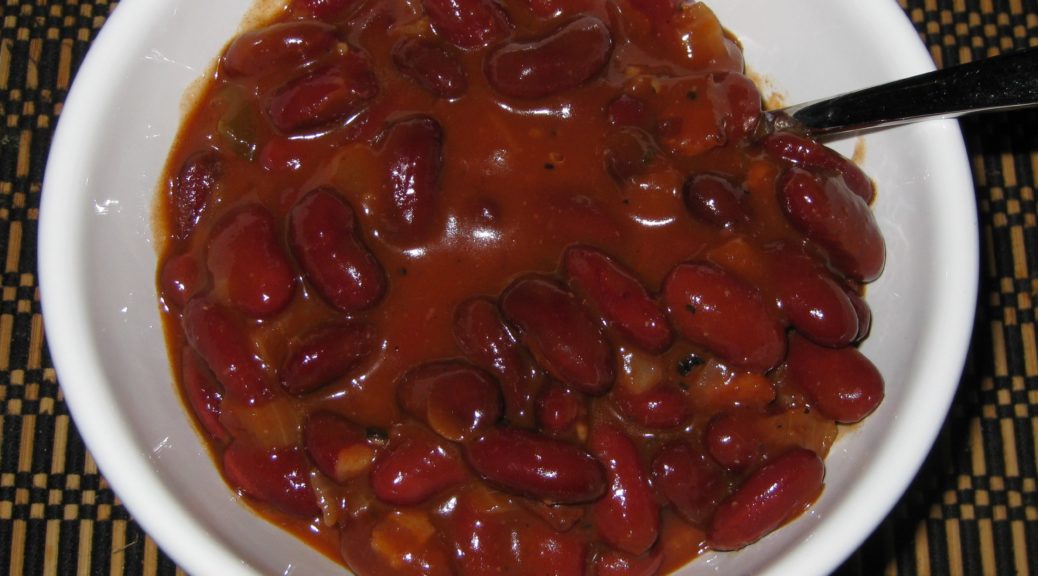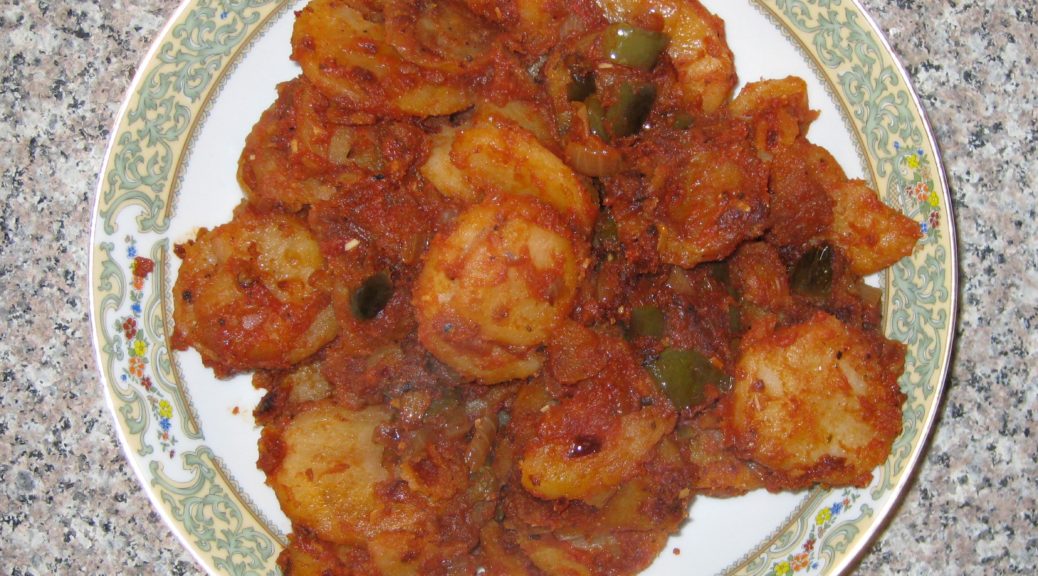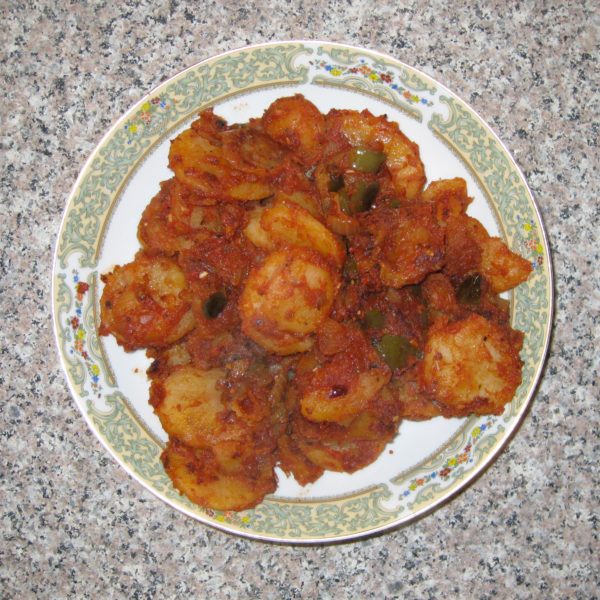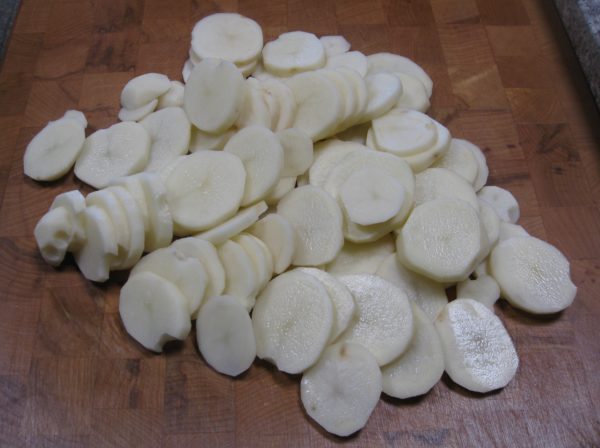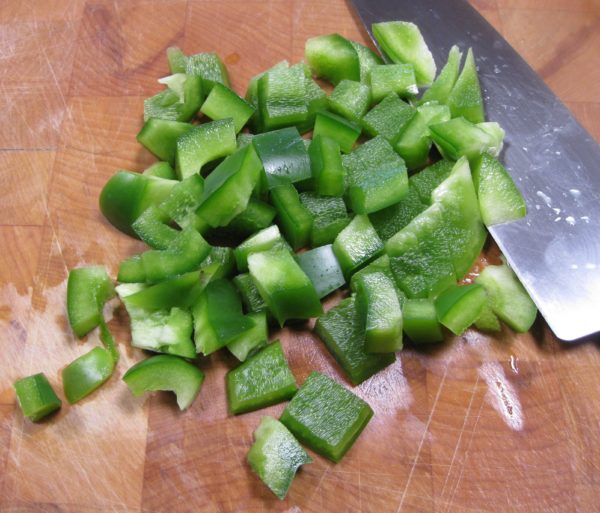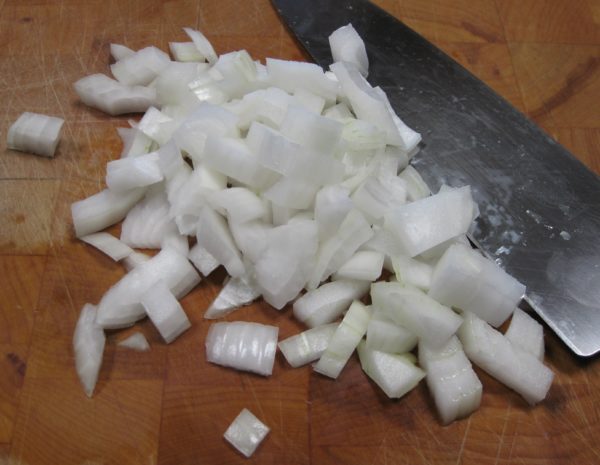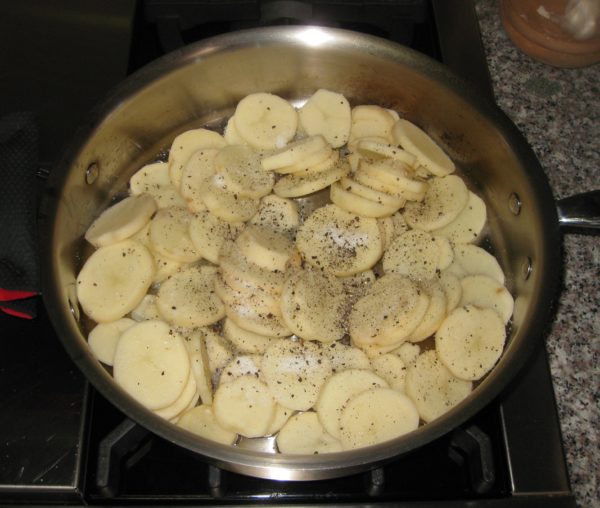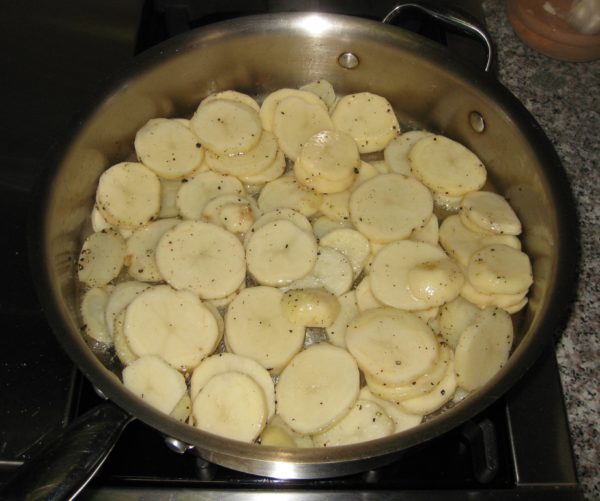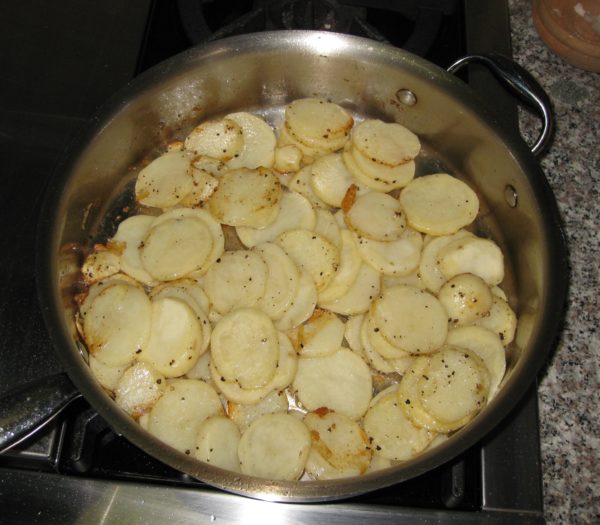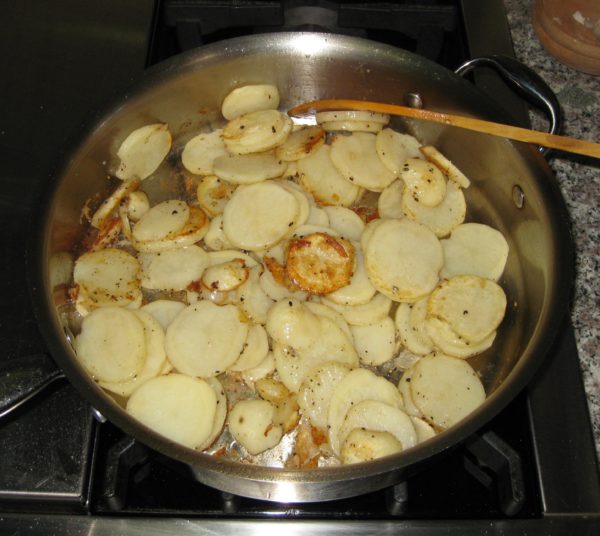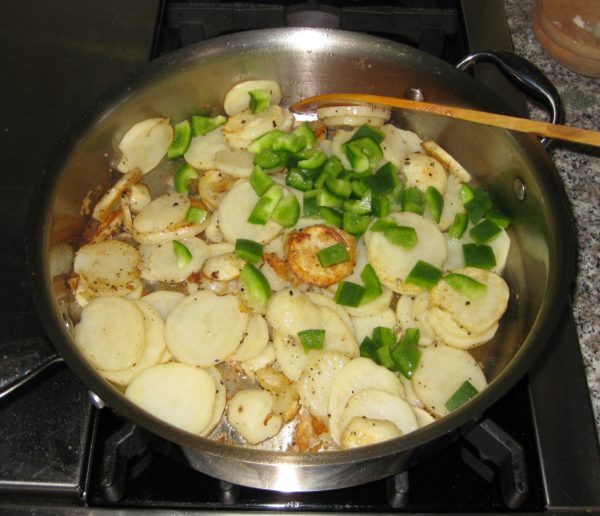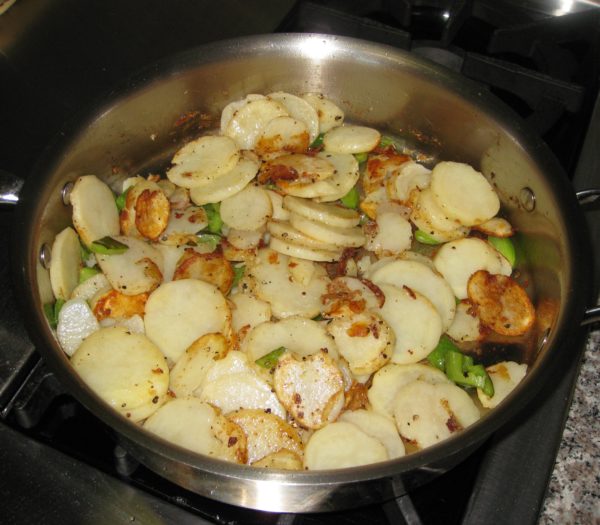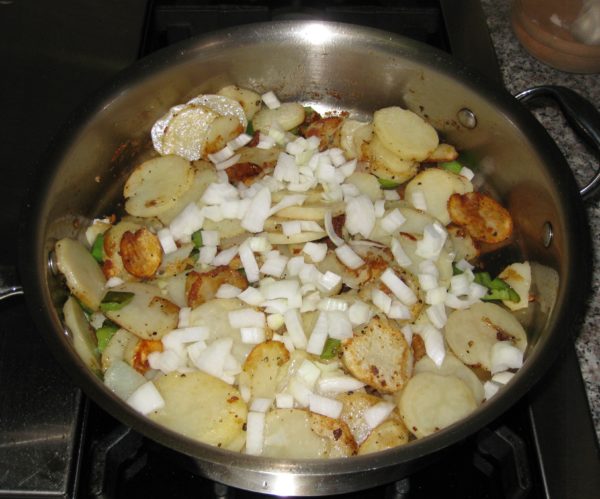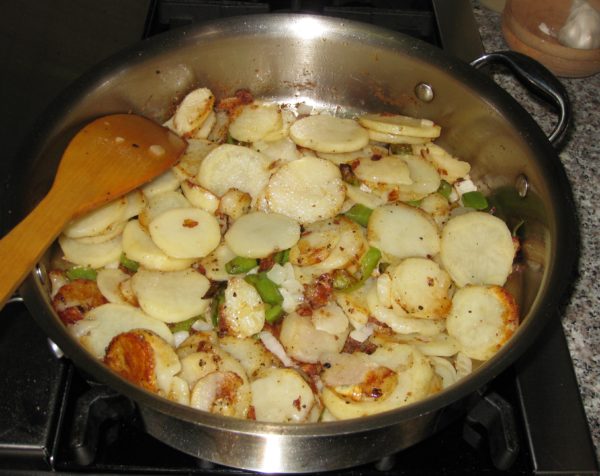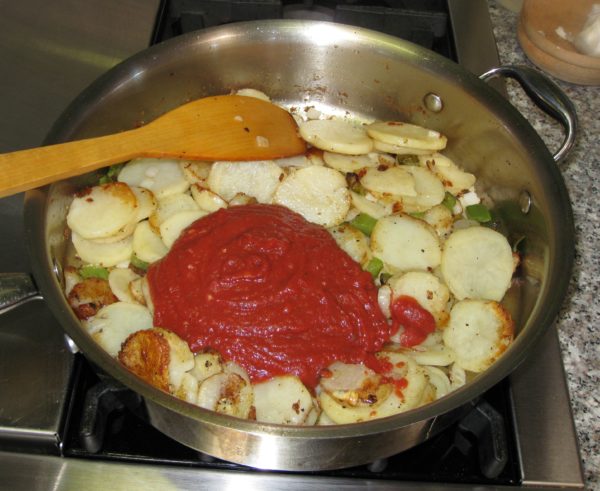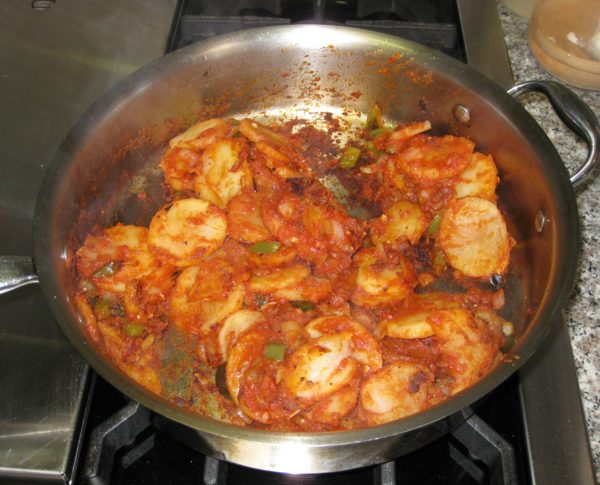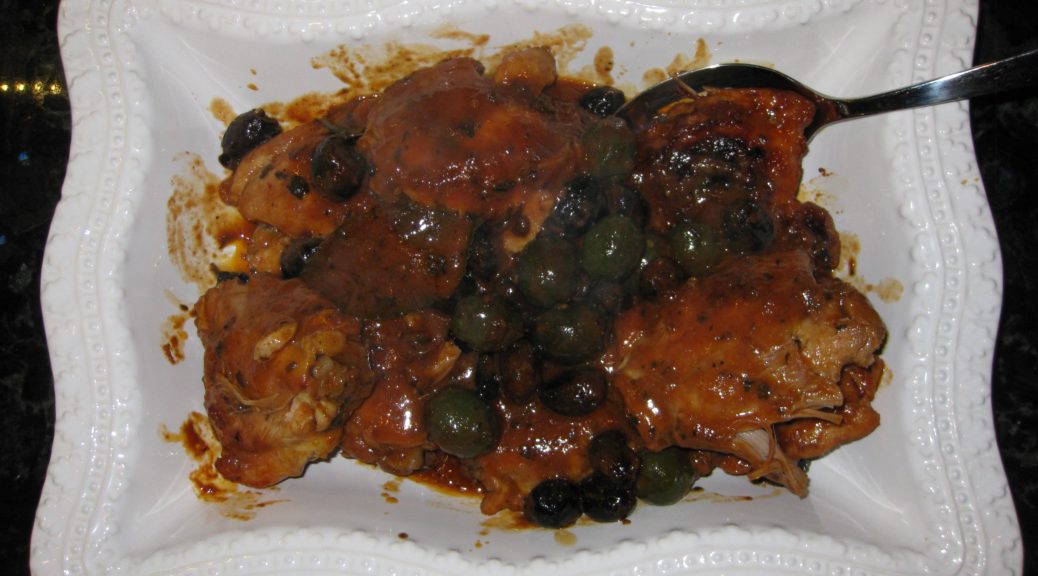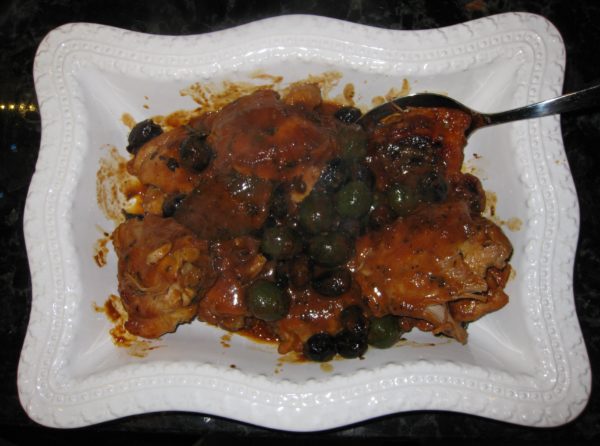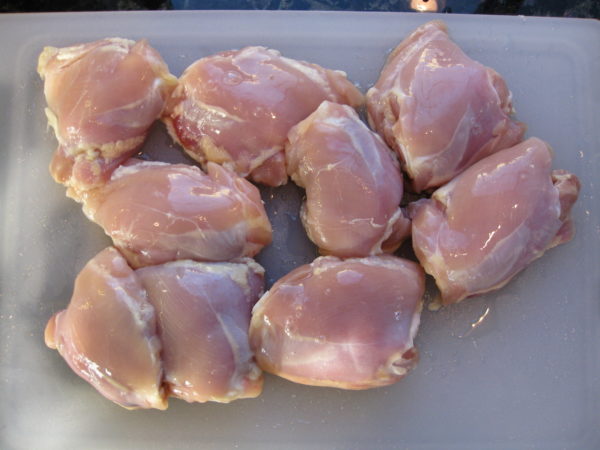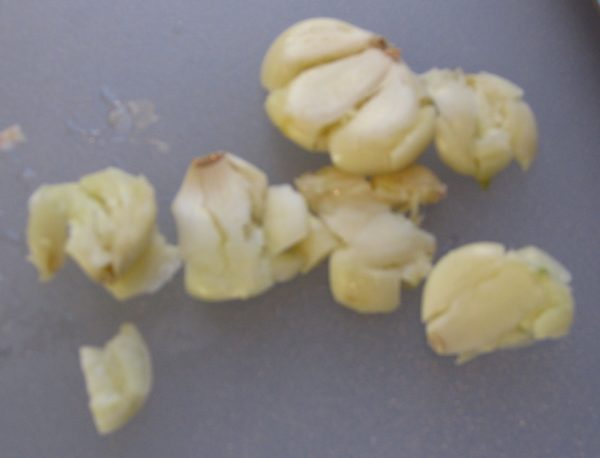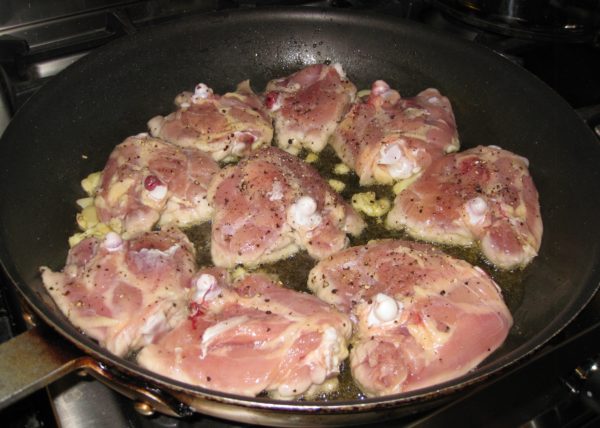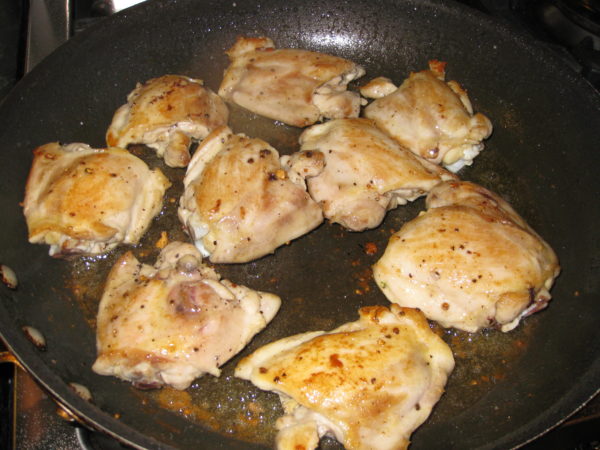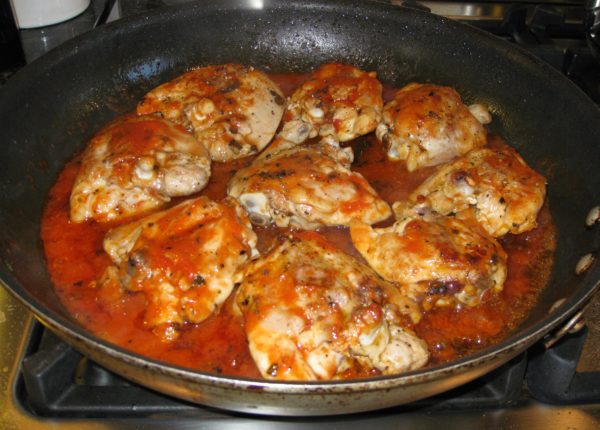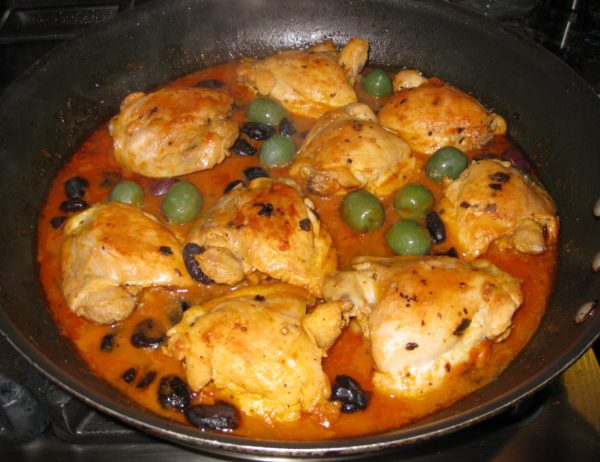February 19, 2018
As you may have figured out by now, we live in a multi-generational household.
My husband’s parents live in our casita in Santa Fe. Before we moved to Santa Fe, they lived in our coach house in Chicago.
Meals are usually communal affairs and, after many years, I’m learning to make some of my mother-in-law’s dishes that I’ve taken for granted for more than 20 years.
Though these beans could easily be the centerpiece of a vegetarian meal if you leave out the bacon, they usually accompany something more pleasing to carnivores (that would be my husband and my father-in-law). For this rendition, I went back to the original recipe, with bacon, though usually my mother-in-law leaves it out and simply adds a few tablespoons of olive oil to sauté the onion and bell pepper.

As I was learning to make these with my mother-in-law, I also learned that the recipe originally came from Lorraine, the wife of my brother-in-law’s godfather, Jack. Lorraine is of Polish heritage but was married to Jack, a close friend of my father-in-law who moved to the USA from Italy.
Click HERE to join our mailing list and you’ll never miss a recipe again!
I’m totally confused by the heritage of these beans. My mother-in-law says they’re Polish based on Lorraine. I always thought of them as Italian because, until recently, I thought the recipe was from my mother-in-law’s family and, also, because the red sauce with bacon is pretty similar to an Italian-American adaptation of a classic Italian method for cooking green beans. The bacon is a substitute for pancetta which is the same cut of meat as bacon but which is not smoked after it is cured.
I guess I’m going to have to go with my mother-in-law’s assertion that these are Polish though I can’t say I ever had anything like them among the Poles and other Eastern Europeans in my hometown of Johnstown, PA. Really, though, that’s not definitive. I’ve never had any potato cakes like my Slovak grandmother’s (unless they were made by one of her daughters-in-law, of which there were seven!). That doesn’t make those potato cakes any less Slovak, though.
Red beans and tomatoes are a common combination internationally. There are versions from New Orleans to Haiti to India to South America to Italy to name just a few. To be sure, the seasonings vary tremendously but the basics, red beans and a tomato-based sauce, remain the same.
Follow us on your social media platform of choice
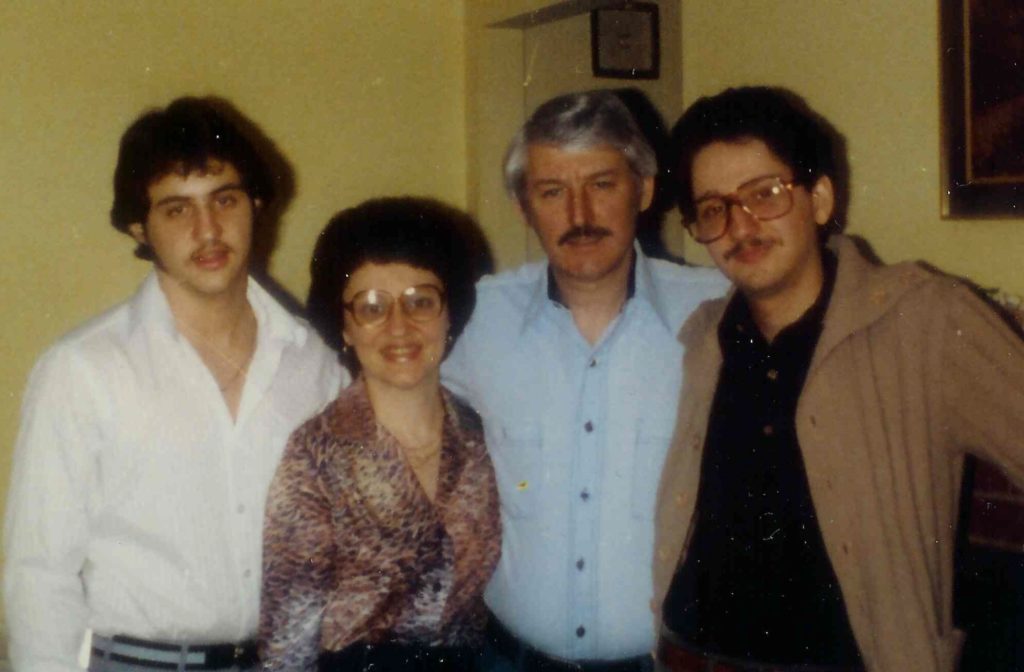
I’ve decided to keep this recipe in its original form, with canned beans and tomato sauce. Although I keep an array of canned beans in my pantry for unexpected events I usually prefer to start with dry beans. Most commercial brands of tomato sauce are made from tomato paste and water, with a bit of onion powder and garlic powder added. In place of tomato sauce, I typically use tomato paste and water to achieve the same results.
If you have a favorite family recipe and a bit of a story to tell, please email me at santafecook@villasentieri.com and we can discuss including it in the blog. I am expanding the scope of my blog to include traditional recipes from around the country and around the world. If you haven’t seen Bertha’s Flan or Melinda’s Drunken Prunes, take a look. They will give you an idea of what I’m looking for.
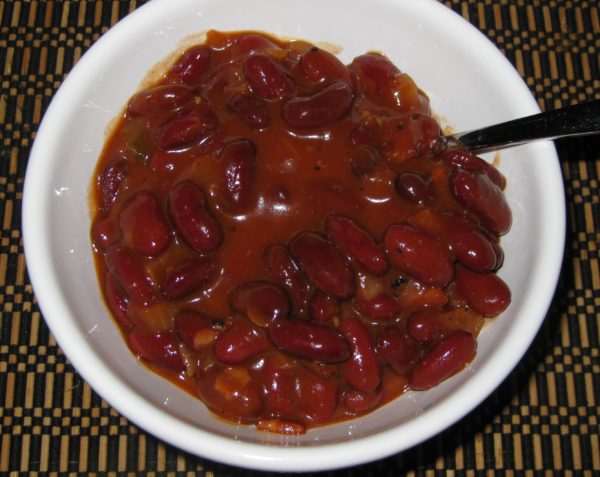
| Prep Time | 5 minutes |
| Cook Time | 75 minutes |
| Servings |
people
|
- 1/2 medium onion diced
- 1/2 green bell pepper diced
- 2-3 ounces bacon chopped
- 2 x 15 oz cans red kidney beans
- 1 x 8 ounce can tomato sauce
- 3/4 cup water
- salt to taste
- black pepper freshly ground to taste
Ingredients
|

|
- Dice the onion.
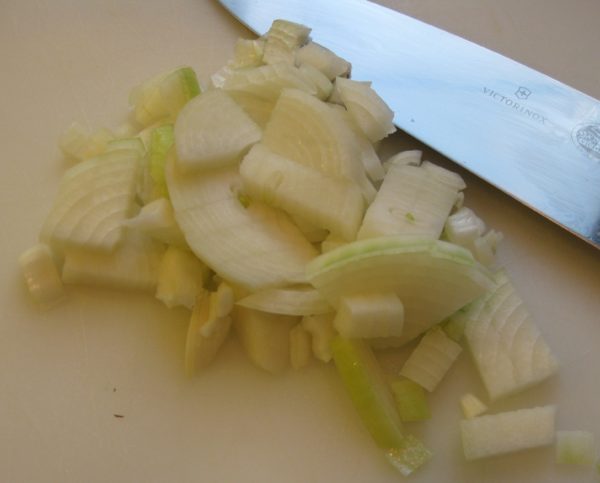
- Dice the bell pepper.
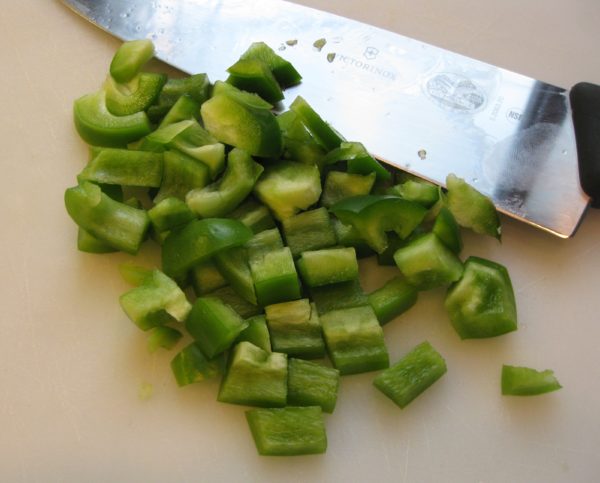
- Chop the bacon.
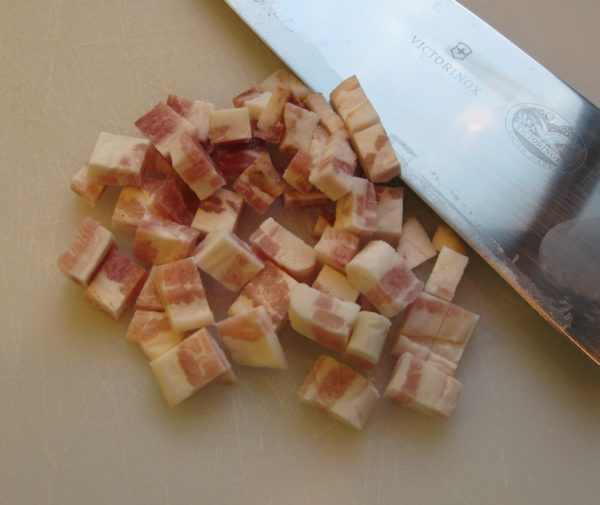
- Sauté the bacon until it begins to color, adding a small amount of oil if needed to keep it from sticking.
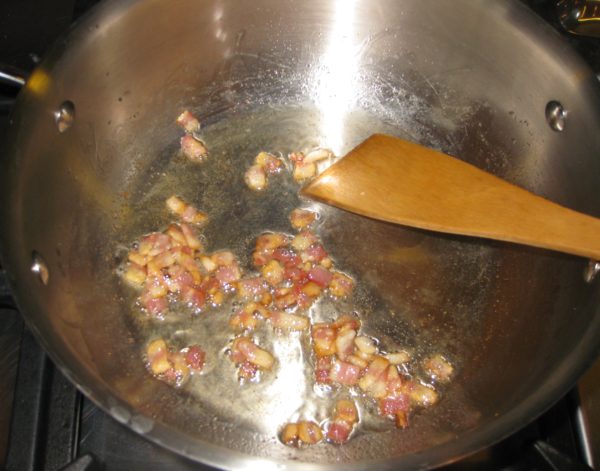
- Add the onion and bell pepper to the bacon.
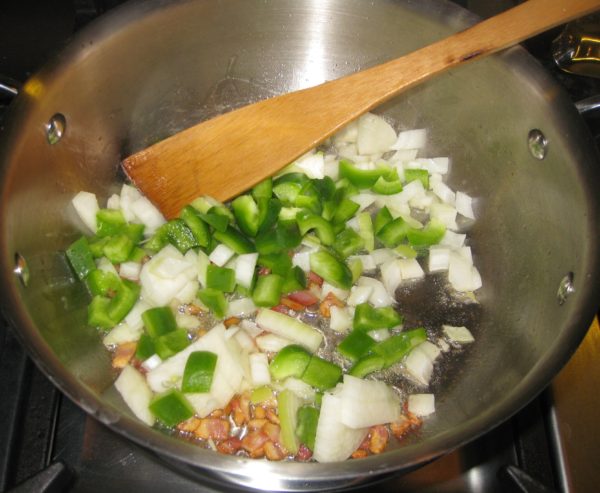
- Sauté until the onion just begins to color and the pepper becomes a dull green and starts to soften. It may be necessary to cover the pan and/or add a tiny amount of water if the onion and/or pepper begin to get too brown.
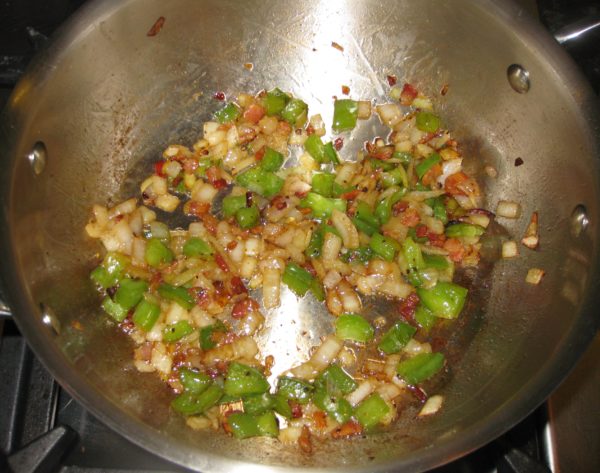
- Add the beans and their liquid.
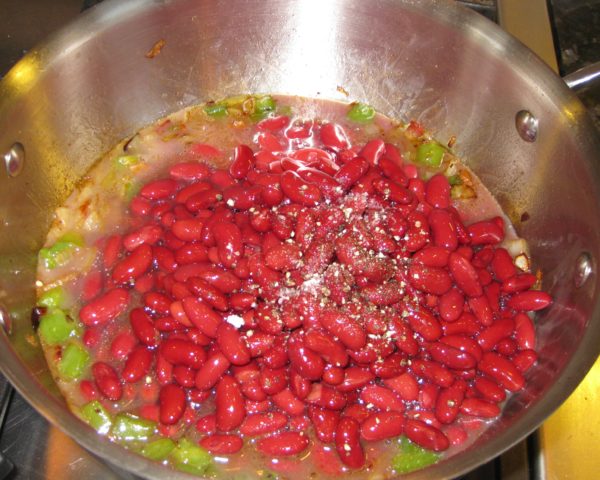
- Season with salt and pepper. Bring to a boil.
- Add tomato sauce and water.
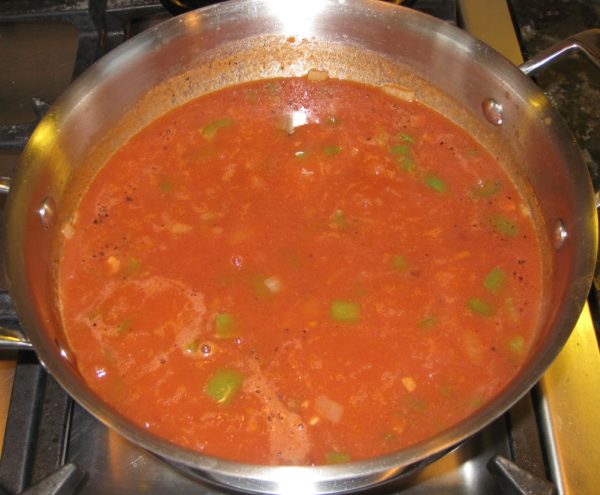
- Simmer, partially covered, for approximately one hour, adding additional water if necessary.
- Taste and adjust seasoning while the beans are cooking.
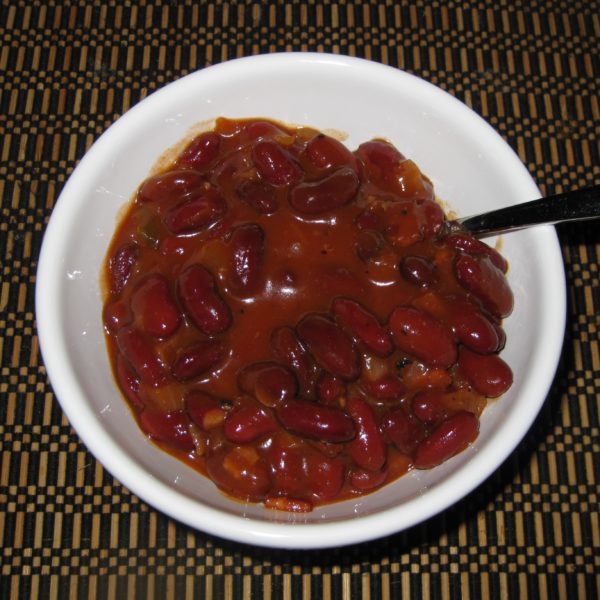
Copyright © 2018 by VillaSentieri.com. All rights reserved.

